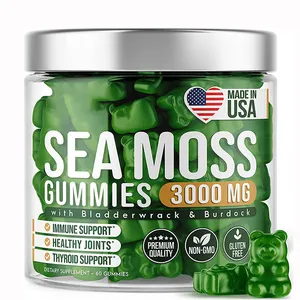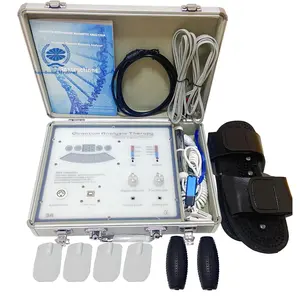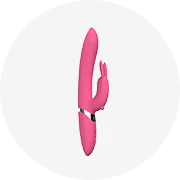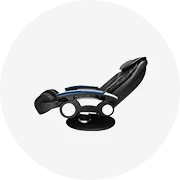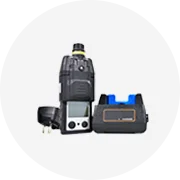Phổ biến trong ngành của bạn

Nhà Máy bán hàng trực tiếp vui chơi giải trí tiện nghi phụ tùng phanh dải
Sẵn sàng vận chuyển
11,00 US$ - 13,00 US$
Đơn hàng tối thiểu: 5 Cái
Vận chuyển mỗi chiếc: 10,22 US$


Chất lượng cao dày 0.8mm 304L 316 316L 304 giờ/CR Dải thép không gỉ 420 430 409L 904L gương Dải thép không gỉ
1.100,00 US$ - 1.300,00 US$
Đơn hàng tối thiểu: 10 Tấn
Vận chuyển mỗi chiếc: 72,08 US$


Chất Lượng Cao Giá Thấp HCG Mang Thai Thử Nghiệm Dải 4 Mét
0,05 US$ - 0,10 US$
Đơn hàng tối thiểu: 5000 Cái


CE 28PCS Tự Nhiên Chống Dị Ứng Màu Đen Răng Làm Trắng Dải Than Hoạt Tính Làm Trắng Dải Biểu Tượng Tùy Chỉnh
1,56 US$ - 1,86 US$
Đơn hàng tối thiểu: 10 Hộp
Vận chuyển mỗi chiếc: 29,45 US$


Vật liệu từ mềm thấp dựa trên sắt 55mm chiều rộng vô định hình dải từ nanocrystalline dải
6,40 US$ - 7,40 US$
Đơn hàng tối thiểu: 10 Kilogram
Vận chuyển mỗi chiếc: 4,55 US$


Tùy Chỉnh Bất Kỳ Kích Thước Silicone U Hồ Sơ Thực Phẩm Lớp U-shaped Glass Cạnh Silicone Strips Mềm Linh Hoạt Silicone Niêm Phong Strip
0,26 US$ - 0,29 US$
Đơn hàng tối thiểu: 100 Mét

Dây Cao Su Silicone Chịu Nhiệt Bất Kỳ Màu Nào Silicon Đùn Dải Tròn Sử Dụng Phổ Biến Dải Cao Su
0,50 US$ - 1,50 US$
Đơn hàng tối thiểu: 1000 Mét

Dải Niêm Phong Xốp Polyurethane Cắt Bất Kỳ Kích Thước Nào Dải Niêm Phong Cửa Dưới Cùng
0,19 US$ - 0,50 US$
Đơn hàng tối thiểu: 3000 Cái

Phích Cắm Khí Có Thể Cắt Dải Niêm Phong Cửa Ra Vào Và Cửa Sổ Bằng Gỗ Xốp Polyurethane Có Kích Thước Bất Kỳ Dải PU/Chống Va Chạm
0,10 US$ - 0,20 US$
Đơn hàng tối thiểu: 1000 Mét
Vận chuyển mỗi chiếc: 0,06 US$

Tùy Chỉnh Bất Kỳ Vật Liệu Và Bất Kỳ Hình Dạng Cao Su Niêm Phong Dải
0,10 US$ - 10,00 US$
Đơn hàng tối thiểu: 500 Mét

8mm DC24V mật độ cao CRI 90 dẫn băng ánh sáng Dot ít COB dẫn Dải miễn phí cắt 528 Đèn LED/M COB dải ánh sáng bất kỳ cắt
2,30 US$ - 3,30 US$
Đơn hàng tối thiểu: 100 Mét
Vận chuyển mỗi chiếc: 0,31 US$

Phong Cách Mới Ip67 Kép Màu Sắc Đùn Ngoài Trời Không Thấm Nước Bất kỳ Màu Sắc LED Les Dải 480 528 608 840 Đèn Led/M COB Dây Dẫn Dải Ánh Sáng
3,02 US$ - 3,48 US$
Đơn hàng tối thiểu: 50 Mét

Chất Lượng Cao Bọt Niêm Phong Dải Không Khí Nút Cắt Bất kỳ Kích Thước Cửa Dự Thảo Nút Dừng Con Dấu Dải
0,40 US$ - 0,50 US$
Đơn hàng tối thiểu: 1 Cái
Vận chuyển mỗi chiếc: 102,36 US$

Tùy chỉnh bất kỳ ép đùn cách âm khoảng cách Filler cửa xe cửa sổ nước Silicone con dấu dải cao su cho LED ánh sáng
0,01 US$ - 0,10 US$
Đơn hàng tối thiểu: 100 Mét

Chất Lượng Cao Bọt Niêm Phong Dải Air Stoppers Cắt Bất Kỳ Kích Thước Cửa Dự Thảo Stoppers Seal Strip
1,05 US$ - 1,29 US$
Đơn hàng tối thiểu: 500 Cái

Divatla Tùy Chỉnh DIY Thiết Kế Sáng Tạo Bất kỳ Hình Dạng Neon Trang Trí Nội Thất LED Dải Không Thấm Nước Linh Hoạt Bendable Neon Ánh Sáng Dải
1,70 US$ - 2,00 US$
Đơn hàng tối thiểu: 50 Mét

Chất Lượng Cao Bọt Niêm Phong Dải Không Khí Nút Cắt Bất kỳ Kích Thước Cửa Dự Thảo Nút Dừng Con Dấu Dải
0,28 US$ - 0,36 US$
Đơn hàng tối thiểu: 50 Mét

Hình trụ EPDM bọt cao su hồ sơ niêm phong Dải tùy chỉnh bất kỳ kích thước đường kính đen rắn tròn
0,32 US$ - 0,85 US$
Đơn hàng tối thiểu: 100 Mét
Vận chuyển mỗi chiếc: 98,08 US$

Chất lượng cao bọt niêm phong dải không khí stoppers cắt bất kỳ kích thước cửa dự thảo stoppers con dấu dải
0,80 US$
Đơn hàng tối thiểu: 500 Mét
Vận chuyển mỗi chiếc: 1,88 US$

Halogen Miễn Phí Bọt Silicone Chuỗi Cuộn Mềm Dẻo Silicone Sponge Cord Tuyệt Vời Chịu Nhiệt Silicone Bọt Strip
0,13 US$ - 0,20 US$
Đơn hàng tối thiểu: 200 Mét

Hàng Mới Về 2021, Dải Sáp Hai Lông Mày Để Sử Dụng Cá Nhân Với Hình Dạng Khác Nhau
0,06 US$ - 0,26 US$
Đơn hàng tối thiểu: 12 Cái

Nhà Máy Giá PVC Chống Thấm Nước Niêm Phong Dải Cho Vòi Hoa Sen Cửa, Cửa Trượt
0,10 US$ - 0,50 US$
Đơn hàng tối thiểu: 100 Cái


Hot được hỗ trợ đóng cửa di động cao su tổng hợp, mạnh mẽ dính EPDM pha trộn Dải bọt băng dính bọt xốp cao su con dấu dải
0,58 US$ - 0,98 US$
Đơn hàng tối thiểu: 1 Cái

Siêu Led Neon linh hoạt Strip 360 góc DC5V RGB địa chỉ độ sáng cao Led Neon ánh sáng
3,69 US$ - 4,25 US$
Đơn hàng tối thiểu: 5 Mét

Dải Niêm Phong Gioăng Cửa Tủ Lạnh Rắn Cao Su EPDM Ép Đùn
0,10 US$
Đơn hàng tối thiểu: 100 Cái
Vận chuyển mỗi chiếc: 1,06 US$

S Shape Đen Cao Su Weatherstrip Seal Strip Cho Cửa Sổ Và Cửa
0,20 US$ - 0,50 US$
Đơn hàng tối thiểu: 100 Mét
Vận chuyển mỗi chiếc: 0,51 US$

Bảng Điều Khiển Duy Nhất Màn Hình Nước Tiểu TRA TML Thuốc Kiểm TRA Dải
Sẵn sàng vận chuyển
0,11 US$
Đơn hàng tối thiểu: 2000 Cái

Màu sắc nhất quán Epistar chip 320 chip/M COB LED Strip 8 mét PCB chiều rộng 10 wát/mét mà không cần bất kỳ dấu chấm
0,58 US$ - 0,70 US$
Đơn hàng tối thiểu: 200 Mét
Vận chuyển mỗi chiếc: 15,15 US$

NBR Dây Cao Su Chịu Dầu Nitrile Cao Su Vòng Dải 85A Cứng Miếng Đệm Cao Su
0,50 US$ - 5,00 US$
Đơn hàng tối thiểu: 1000 Mét

Tùy Chỉnh Siêu Mạnh Mẽ Rõ Ràng Không Trượt Băng Bồn Tắm Chống Trượt Strips Vòi Hoa Sen Dán
0,50 US$ - 2,00 US$
Đơn hàng tối thiểu: 10 Bộ

Misumi Bán Buôn Trang Trí Nhôm Quý Vòng Gốm Tường Góc Cạnh Gạch Trim Strips
0,46 US$
Đơn hàng tối thiểu: 1000 Cái

PVC Silicone Cao Su Tùy Chỉnh Kích Thước Cửa Quét XYST,XYST Nội Các Không Thấm Nước Draft Stopper Dưới Cửa Seal Strip Cứng Nhắc Và Linh Hoạt PVC Silicone Cao Su
0,20 US$ - 2,00 US$
Đơn hàng tối thiểu: 1000 Cái

Dải Niêm Phong Cao Su Chịu Nhiệt Độ Cao Và Mài Mòn Dải Cao Su Hình Vuông Chắc Chắn Dây Cao Su NBR EPDM
0,05 US$ - 0,20 US$
Đơn hàng tối thiểu: 10 Mét

Tùy chỉnh rõ ràng đàn hồi cao su Móc Áo DẢI với vây băng dính trong suốt phụ kiện tủ quần áo
0,03 US$ - 0,13 US$
Đơn hàng tối thiểu: 1000 Cái

Nhà Máy Giá SMD 5050 ws2812b địa chỉ RGB LED Strips RGB ws2812b ánh sáng LED Strip
1,65 US$ - 1,80 US$
Đơn hàng tối thiểu: 10 Mét

Tùy Chỉnh Bất Kỳ Kích Thước Đường Kính Đen Rắn Tròn Hình Trụ Mềm EPDM Bọt Cao Su Ép Đùn Strips
0,01 US$ - 1,60 US$
Đơn hàng tối thiểu: 500 Mét


Mật Độ Cao Màu Đỏ Vuông Silicone Bọt Biển Ống Cao Su Con Dấu Dải Bọt.
0,50 US$ - 1,50 US$
Đơn hàng tối thiểu: 100 Mét

Die Cut Silicone SPACER Feet Strips Với Cao Su Dính Bumper Feet Cao Su Bumper Pads Hình Trụ Loại
0,30 US$ - 0,50 US$
Đơn hàng tối thiểu: 1000 Mét
Vận chuyển mỗi chiếc: 0,04 US$
Các danh mục hàng đầu
Giới thiệu về dải anis
Ngày nay, dải anis không còn là điều mới mẻ đối với những người bình thường và không còn bị coi là điều cấm kỵ khi sử dụng. Nếu bạn đang tìm kiếm niềm vui áp chót đó, bạn phải kiểm tra sự bao la. Bộ sưu tập dải anis tại Alibaba.com. Những gợi cảm và cong. dải anis đáng giá từng xu và chắc chắn làm cho đêm đó trở nên đặc biệt đối với bạn. Những con búp bê này có ngoại hình giống như thật, bắt đầu từ tóc đến ngón chân theo mọi nghĩa.
Cho dù bạn là một người cô đơn đang tìm kiếm một người bạn đời như cuộc sống hay một cặp vợ chồng muốn thêm gia vị cho cuộc sống của họ, bạn đều có thể sử dụng chúng . dải anis để đốt cháy ngọn lửa đó. Những ngoạn mục. dải anis có thể tùy chỉnh theo mong đợi của bạn. Những điều tuyệt vời. dải anis có sẵn ở cả phiên bản dành cho nam và nữ và được làm từ silicone cấp y tế để sử dụng an toàn. Hãy sở hữu ngay bây giờ và tận hưởng một đêm đam mê và cháy bỏng.
Alibaba.com cung cấp những điều tuyệt vời này. dải anis ở mọi hình dạng cơ thể, kích thước và sắc tộc. Dù yêu cầu của bạn đối với. dải anis, bạn có thể tải tất cả chúng trên trang web. Những cái này. dải anis được tạo hình bởi những người thợ thủ công giỏi nhất và mọi chi tiết phức tạp đều được kiểm tra kỹ lưỡng. Những con búp bê này có mắt, tóc, móng tay và tất cả các bộ phận cơ thể khác tương tự như người thật.
Alibaba.com cung cấp nhiều loại. dải anis có thể giúp bạn mua các sản phẩm phù hợp với ngân sách và các yêu cầu khác của bạn. Các sản phẩm này an toàn để sử dụng, được chứng nhận và thân thiện với môi trường trong tự nhiên. Đơn đặt hàng OEM có sẵn trên các sản phẩm này.
Cho dù bạn là một người cô đơn đang tìm kiếm một người bạn đời như cuộc sống hay một cặp vợ chồng muốn thêm gia vị cho cuộc sống của họ, bạn đều có thể sử dụng chúng . dải anis để đốt cháy ngọn lửa đó. Những ngoạn mục. dải anis có thể tùy chỉnh theo mong đợi của bạn. Những điều tuyệt vời. dải anis có sẵn ở cả phiên bản dành cho nam và nữ và được làm từ silicone cấp y tế để sử dụng an toàn. Hãy sở hữu ngay bây giờ và tận hưởng một đêm đam mê và cháy bỏng.
Alibaba.com cung cấp những điều tuyệt vời này. dải anis ở mọi hình dạng cơ thể, kích thước và sắc tộc. Dù yêu cầu của bạn đối với. dải anis, bạn có thể tải tất cả chúng trên trang web. Những cái này. dải anis được tạo hình bởi những người thợ thủ công giỏi nhất và mọi chi tiết phức tạp đều được kiểm tra kỹ lưỡng. Những con búp bê này có mắt, tóc, móng tay và tất cả các bộ phận cơ thể khác tương tự như người thật.
Alibaba.com cung cấp nhiều loại. dải anis có thể giúp bạn mua các sản phẩm phù hợp với ngân sách và các yêu cầu khác của bạn. Các sản phẩm này an toàn để sử dụng, được chứng nhận và thân thiện với môi trường trong tự nhiên. Đơn đặt hàng OEM có sẵn trên các sản phẩm này.
